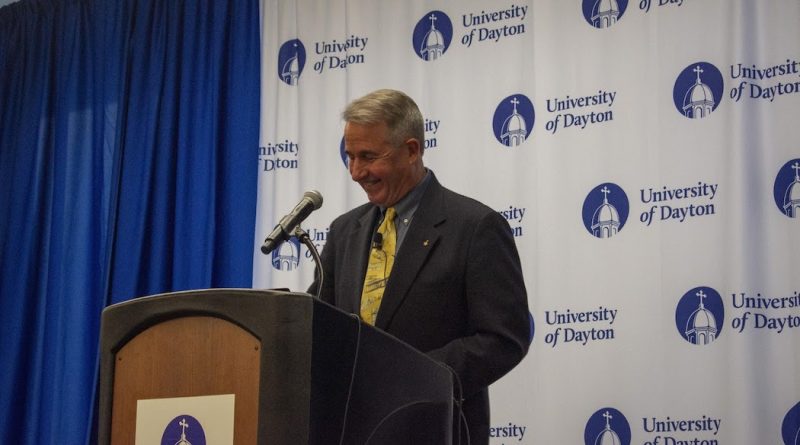Astronaut Visits UD Campus
Grace James
News Editor
Astronaut and UC Davis professor Stephen Robinson was welcomed by a nearly full house Sept. 23 as part of the university’s Speaker Series.
President Eric Spina gave an introduction, praising Robinson as a “dear friend” and “renaissance man.” Robinson received his bachelor’s degree in engineering from UC Davis before going on to pursue a master’s and PhD, researching turbulence physics.

After beginning his career at NASA in 1979, Robinson became an astronaut in 1994. He flew on four Space Shuttle missions totaling 1,400 hours of flight experience, visited the International Space Station twice and performed three spacewalks.
Robinson flew on the shuttle as a flight engineer, meaning he was responsible for understanding all the systems on board the spaceship. One wrong move and the space shuttle could easily be blown up, Robinson said.
For Robinson, the first 90 seconds of the ride to space were the most terrifying.
“You’re basically a FedEx package,” he joked.
Robinson’s projects in space included working on the robotic arm on the International Space Station, which is used to help capture incoming spacecraft. The Station took 115 flights to build and is roughly the size of an American football field. It serves as a research lab in low earth orbit (LEO) and weighs one million pounds.
To prepare for his spacewalks, Robinson trained in the Neutral Buoyancy Lab; a giant pool which houses a mockup of the Station. After four hours of prep, astronauts spend six hours underwater to experience dealing with weightlessness in their spacesuits.
“It really is a huge workout,” Robinson said.

His first spacewalk involved repairing the heat shield on the space shuttle, which prevents the spacecraft from burning up on re-entry into the atmosphere. It was during this mission that Robinson became the first astronaut to use a digital camera during a spacewalk.
After retiring from NASA in 2012, Robinson became a professor at UC Davis, where he works with both undergraduate and graduate students in a research lab. In his lab, Robinson researches the challenges to life and health in space, including temperature extremes, weightlessness and radiation. He is also working on a “space ambulance” that could bring astronauts home from the Station if they had a health emergency.
Despite the discontinuation of the space shuttle program in 2011, Robinson is optimistic for the future of human spaceflight.
“You’re living in a fantastic time,” Robinson said, addressing the engineering students in the audience.
Seven crewed vehicles are being worked on for future space travel in the U.S., including Dragon by SpaceX and Atlas 5 by Boeing. Both spacecraft should be ready to fly humans in approximately one year.
Robinson is hopeful for the collaboration between NASA and private companies, and stressed the importance of balancing financial goals with safety.
NASA is also working on its Orion space capsule, which will be sent into deep space.
For Robinson, teamwork was the most important part of his job as an astronaut.
“It forms a very special bond,” he said. “You become closer than family.”
Photos taken by Kathryn Niekamp ‘21

